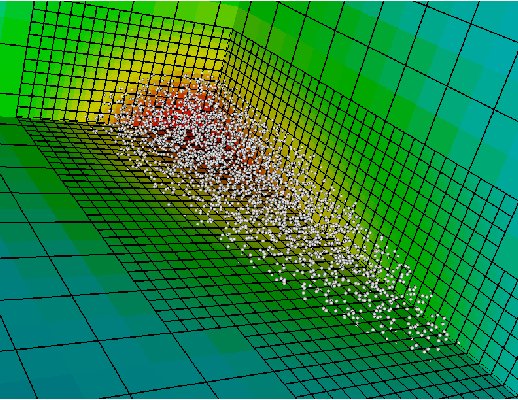
As discussed in section 3.1.1 of the original proposal, the goal in this project is to develop two different simulation capabilities related to accelerator design. For Vlasov-Poisson equations for beam dynamics, the goal is to develop a version of the particle-in-cell method in which the Poisson equation for the electrostatic field is solved on an AMR grid. The potential speedup of such a code is substantial. The grid resolution is determined by the requirement that the number of particles per grid point is bounded from above (around 10), while the size of the domain is determined by other factors, e.g. boundary conditions. In practice, only a small fraction of the field domain contains particles, and the remainder could be adequately resolved with far fewer grid points without any loss of accuracy in the particle trajectories.
The second goal is to develop a simulation capability for transient gas jet problems arising in the simulation of laser-driven plasma-wakefield accelerators. This problem is a fluid dynamics problem, requiring a solution to the unsteady compressible flow equations in complex geometries. These simulations will use the embedded boundary software described in section 3.3 of the 2003 APDEC status report.
We have developed a prototype implementation of an AMR-PIC method
(ChomboPIC).

| AMR-PIC calculation. The electrostatic potential induced by the particles is displayed on the slicing planes. |
We have begun to compare in detail the results obtained from the orginal MLI/PIC code to those obtained by replacing the uniform grid Poisson PIC solver with ChomboPIC. The principal difference between the two codes is the Poisson solver: ChomboPIC uses a finite-difference algorithm versus the spectrally accurate FFT convolution algorithm used by MLI.
We are now in the process of performing a careful and systematic comparison between the two codes, to obtain quantitative estimates of the impact of the change in discretizations on the overall accuracy of the method in real beam dynamics problems.